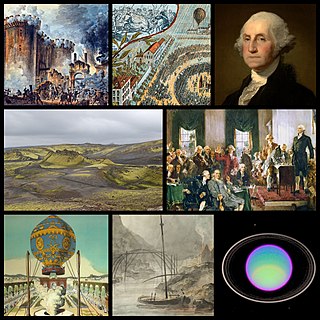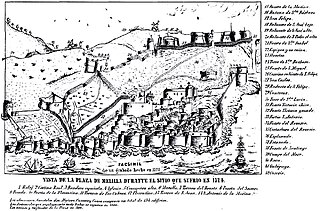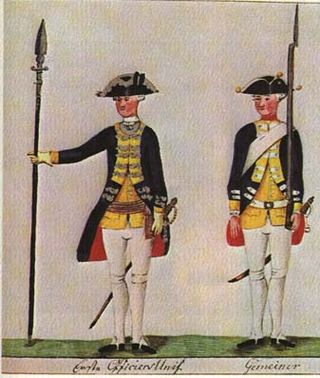Other years |
| Countries of the United Kingdom |
| Scotland |
| Sport |
| 1776 English cricket season |
Events from the year 1776 in Great Britain .
Other years |
| Countries of the United Kingdom |
| Scotland |
| Sport |
| 1776 English cricket season |
Events from the year 1776 in Great Britain .

The American Revolutionary War, also known as the Revolutionary War or American War of Independence, was the military conflict of the American Revolution. American Patriot forces, organized as the Continental Army and commanded by George Washington, defeated the British Army. This lead to the Treaty of Paris in 1783, in which Great Britain recognized the independence and sovereignty of the United States. In the war, American Patriot forces eventually gained the support of France and Spain. The British and Loyalist forces also included Hessian soldiers from Germany. The conflict was fought in North America, the Caribbean, and the Atlantic Ocean.

The 1770s was a decade of the Gregorian calendar that began on January 1, 1770, and ended on December 31, 1779. A period full of discoveries, breakthroughs happened in all walks of life, as what emerged at this period brought life to most innovations we know today.

The 1780s was a decade of the Gregorian calendar that began on January 1, 1780, and ended on December 31, 1789. A period widely considered as transitional between the Age of Enlightenment and the Industrial Revolution, the 1780s saw the inception of modern philosophy. With the rise on astronomical, technological, and political discoveries and innovations such as Uranus, cast iron on structures, republicanism and hot-air balloons, the 1780s kick-started a rapid global industrialization movement, leaving behind the world's predominantly agrarian customs in the past.

1782 (MDCCLXXXII) was a common year starting on Tuesday of the Gregorian calendar and a common year starting on Saturday of the Julian calendar, the 1782nd year of the Common Era (CE) and Anno Domini (AD) designations, the 782nd year of the 2nd millennium, the 82nd year of the 18th century, and the 3rd year of the 1780s decade. As of the start of 1782, the Gregorian calendar was 11 days ahead of the Julian calendar, which remained in localized use until 1923.

1774 (MDCCLXXIV) was a common year starting on Saturday of the Gregorian calendar and a common year starting on Wednesday of the Julian calendar, the 1774th year of the Common Era (CE) and Anno Domini (AD) designations, the 774th year of the 2nd millennium, the 74th year of the 18th century, and the 5th year of the 1770s decade. As of the start of 1774, the Gregorian calendar was 11 days ahead of the Julian calendar, which remained in localized use until 1923.

1778 (MDCCLXXVIII) was a common year starting on Thursday of the Gregorian calendar and a common year starting on Monday of the Julian calendar, the 1778th year of the Common Era (CE) and Anno Domini (AD) designations, the 778th year of the 2nd millennium, the 78th year of the 18th century, and the 9th year of the 1770s decade. As of the start of 1778, the Gregorian calendar was 11 days ahead of the Julian calendar, which remained in localized use until 1923.

1777 (MDCCLXXVII) was a common year starting on Wednesday of the Gregorian calendar and a common year starting on Sunday of the Julian calendar, the 1777th year of the Common Era (CE) and Anno Domini (AD) designations, the 777th year of the 2nd millennium, the 77th year of the 18th century, and the 8th year of the 1770s decade. As of the start of 1777, the Gregorian calendar was 11 days ahead of the Julian calendar, which remained in localized use until 1923.

1775 (MDCCLXXV) was a common year starting on Sunday of the Gregorian calendar and a common year starting on Thursday of the Julian calendar, the 1775th year of the Common Era (CE) and Anno Domini (AD) designations, the 775th year of the 2nd millennium, the 75th year of the 18th century, and the 6th year of the 1770s decade. As of the start of 1775, the Gregorian calendar was 11 days ahead of the Julian calendar, which remained in localized use until 1923.

Hessians were German soldiers who served as auxiliaries to the British Army during several major wars in the 18th century including the American Revolutionary War. The term is a synecdoche for all Germans who fought on the British side, since 65% came from the German states of Hesse-Kassel and Hesse-Hanau. Known for their discipline and martial prowess, around 30,000 Germans fought for the British during the war, around 25% of British land forces.

The Battle of White Plains took place during the New York and New Jersey campaign of the American Revolutionary War on October 28, 1776, near White Plains, New York. Following the retreat of George Washington's Continental Army northward from New York City, British General William Howe landed troops in Westchester County, intending to cut off Washington's escape route. Alerted to this move, Washington retreated farther, establishing a position in the village of White Plains but failing to establish firm control over local high ground. Howe's troops drove Washington's troops from a hill near the village; following this loss, Washington ordered the Americans to retreat farther north.

New Jersey played a central role in the American Revolution both politically and militarily. It was the site of more than 90 military engagements, including the pivotal battles of Trenton, Princeton, and Monmouth. George Washington led his army across the state four times and encamped there during three hard winters, enduring some of the greatest's setbacks of the war as well as seminal victories. New Jersey's decisive role in the conflict earned it the title, "Crossroads of the American Revolution".
Lt.-Colonel Christopher Carleton (1749–1787) was born into an Ulster military family in Newcastle-upon-Tyne, England. Christopher's parents died at sea when he was only four years old and his uncles, Guy Carleton, the future Governor General of Canada and Commander-in-Chief, North America, along with Thomas Carleton, later the 1st Governor of New Brunswick, saw to his education and upbringing. At the age of twelve, Chistopher joined the British Army as an ensign in the 31st Regiment of Foot. Before his first tour of duty in North America, Chistopher married Anne Howard, whose sister Maria was the wife of Guy Carleton. While in North America, Christopher Carleton met Sir William Johnson and lived among the Mohawk Indians, learning their language and partaking in their customs. He would remark in later life that the time spent living with the Mohawks was the happiest of his life. These skills would serve him well later. Christopher would be back in England when the American Revolutionary War broke out in 1775.

Pennsylvania was the site of many key events associated with the American Revolution and American Revolutionary War. The city of Philadelphia, then capital of the Thirteen Colonies and the largest city in the colonies, was a gathering place for the Founding Fathers who discussed, debated, developed, and ultimately implemented many of the acts, including signing the Declaration of Independence, that inspired and launched the revolution and the quest for independence from the British Empire.
The Battle of Connecticut Farms, fought June 7, 1780, was one of the last major battles between British and American forces in the northern colonies during the American Revolutionary War. Hessian General Wilhelm von Knyphausen, in command of the British garrison at New York City, made an attempt to reach the principal Continental Army encampment at Morristown, New Jersey. Knyphausen's advance was strongly met by companies of the New Jersey militia at Connecticut Farms. After stiff resistance, the militia were forced to withdraw, but the battle and skirmishing that preceded it sufficiently delayed Knyphausen's advance that he remained there for the night. After realizing that further advance on Morristown would probably be met by even more resistance, Knyphausen withdrew back toward New York.

1776 (MDCCLXXVI) was a leap year starting on Monday of the Gregorian calendar and a leap year starting on Friday of the Julian calendar, the 1776th year of the Common Era (CE) and Anno Domini (AD) designations, the 776th year of the 2nd millennium, the 76th year of the 18th century, and the 7th year of the 1770s decade. As of the start of 1776, the Gregorian calendar was 11 days ahead of the Julian calendar, which remained in localized use until 1923.

Many of the small German states in Europe supported the British. King George III of Britain was simultaneously the ruler of the German state of Hanover. However some European Germans as individuals crossed the Atlantic to help the Patriots, who were supporters of Congress.
Napier is a surname with an English, Scottish, French or Polish origin.
1776 is celebrated in the United States as the official beginning of the nation, with the Declaration of Independence of the Thirteen Colonies from the British Empire issued on July 4.
Events from the year 1777 in the United States.